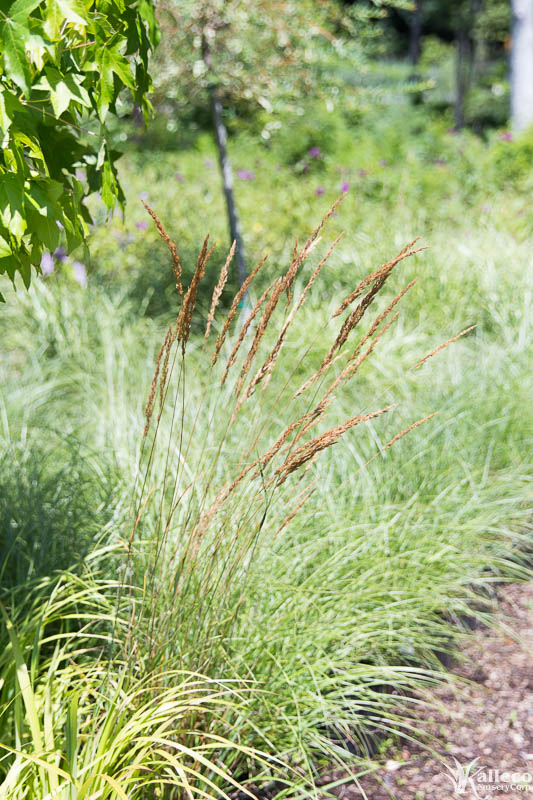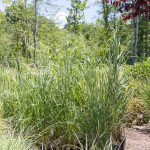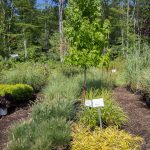Ornamental grasses may seem the Plain Jane of the perennial world – but that’s not really the case. Sure, they are low-maintenance and fast-growing, but that doesn’t mean they’re boring. Need convincing? Here is our short list of reasons perennial grasses can be one of the best plant investments for your landscape.
- Did we mention they’re low maintenance? Once installed, ornamental grasses grow. They’ll benefit from being cut low in the late fall, but other pruning isn’t necessary for anything but aesthetics. Most varieties do well in droughts and are hardy until the first deep frost.
- They’re instant gratification if you’re looking for a tall, vertical element to liven up your garden or landscape bed. Some species can grow up to 6’ in height.
- Grasses come in so many sizes and colors. Some feature lovely plumes (like Miscanthus Gracillimus) or striped stalks (like Little Zebra). Some are small and delicate (like Pennisetum Piglet) and others grow tall with structural, elegant blades (like Pampas Grass)
- Seasonal interest? Grasses are where it’s at. Vibrant greens in the spring and summer turn to warm tans, oranges and browns in the fall – a lovely and seasonally appropriate decoration.
- These plants have so many practical uses. They make great screening barriers to create privacy around pools and yards. They can be installed in mass plantings to stop hillsides from eroding. They provide a soft rustling noise in the breeze that can help cancel our traffic or other noise pollution. And those are just a couple of many functional uses.
So now that you’ve been convinced, where do you plant these? Pools are a popular spot for ornamental grasses, since they offer screening and can give an area an exotic feel. They also make a great backdrop for showy flowering shrubs or perennials (like spirea!). Ornamental grasses are so versatile, they can go virtually anywhere!
Finally, here are a few tips for keeping your ornamental grasses healthy and happy.
- Pay attention to the variety. Some grasses do well in the shade, others like a sunny spot. Many can do either! Place them accordingly.
- Once the grass loses its green color, cut them back to about 1/3 their height. The best time is the late fall, but late winter is fine as well.
- They’ll benefit from a layer of compost worked into the surrounding soil each spring.
- Miscanthus Gracillimus
- Zebra Grass
- Pennisetum “Piglet”
- A variety of grasses
- Pampas Grass










